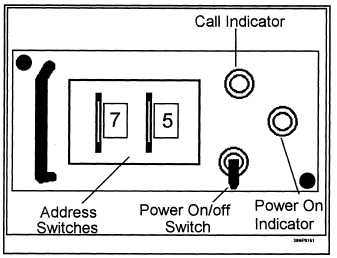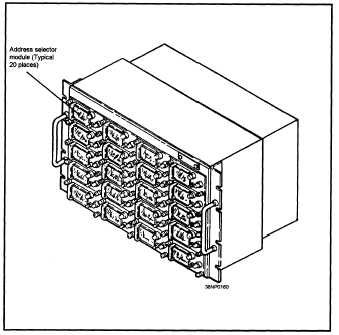When a unit is configured as the NCS, the
operator enters all the assigned addresses of the net
participating units into the address selector modules,
and turns on each module with a valid address. Once
the Roll Call mode is initiated, the DTS will check
each module sequentially. If the power of the module
is on and a valid address is entered, the address is sent
to the DTS for use in an interrogation message. If the
power switch is in the OFF position, that module is
skipped, even if it contains a valid address. When
enabled by the DTS, the address selector module
sends the address entered in the thumb wheels to the
DTS and the call indicator light. The call indicator
will remain lit until the DTS sequences to the next
address module.
CDS INPUT/OUTPUT CONTROL
The data terminal set controls the exchange of
data with the CDS computer. As describe earlier,
input/output
communications
protocol is
accomplished through the use of external interrupts.
The prepare-to-transmit data interrupt, the prepare-to-
receive data interrupt, and the end-of-receive data
interrupts control the DTS to the computer interface.
CDS Computer Input (Receive) Data Cycle
The input data cycle is initiated by the DTS.
When the DTS recognizes the second frame of the
start code, it sets the prepare-to-receive data interrupt
on the input data lines and sets the external interrupt
line. The computer acknowledges the receipt of the
interrupt by sending an input data acknowledge (IDA)
to the DTS.
Upon receipt of the first message frame, the DTS
demodulates the 24-bit word and places it on the input
data lines, along with the two error detection and
correction bits. Once the data is placed on the input
data lines, the DTS sets the input data request (IDR)
line. The computer will sample the data and send an
IDA. This process repeats for all frames of the
message.
The first frame of the stop code is also
treated as a message frame and sent to the CDS
computer. When the DTS recognizes the second
frame of the stop code, it will place the end-of-receive
interrupt on the input data lines and set the interrupt
Figure 2-17.—The Address Control Indicator C9062/U.
line. The interrupt is then processed by the CDS
computer and the input buffer is closed.
If the received stop code is a picket stop code, the
DTS simply resets itself. If the stop code is a control
station stop code, the DTS will compare the next two
frames received with its own station address code.
CDS Computer Output (Transmit) Data Cycle
The output data cycle is initiated when the DTS
detects its own station address, either in an
Figure 2-18.—An address selector module.
2-17




